The following article is originally from Safety+Health, written by a Campbell Institute member representative.
United Airlines strives to promote effective safety communications throughout its network. Finding the right messages, themes and avenues to communicate to 90,000 employees worldwide is a challenge. How do we win hearts and minds with messages that are meaningful globally and delivered effectively, all while embodying United’s shared purpose: “Connecting people and uniting the world?”
Running an injury- and damage-free airline is no easy task when operating 4,500 flights a day to 337 airports across five continents. Each day presents unique challenges and risks in a dynamic environment.
Understanding the forms of communication needed to reach each of our work groups is paramount. Although some employee work groups have computers, others don’t access email regularly. Empowering our employees with safety knowledge that enables them to constantly evaluate risk is a focal point of our communications. United has identified four communication channels to push safety information:
Email safety alerts. This form of communication reaches everyone with email access and provides real-time information. Supervisors can share information contained in alerts quickly via briefings with employees who don’t use computers in their daily work life.
TV information screens. United has large flat-screen monitors in employee areas, including in breakrooms and time clock locations, to provide a constant flow of safety messages.
Weekly safety newspaper. With all of the changes, improvements and quality-control activities in the business, there is no shortage of information to write about. United has a weekly newspaper to keep employees updated on reported hazards, in-progress safety projects and success stories. Through this ongoing communication, employees are able to see what is new with safety at United.
Predictive push notifications to frontline supervisors. One of the most advanced levels of communications we are piloting is “push notifications” sent twice a day to United frontline portable communication devices such as baggage scanners.
Using predictive analytics, we are able to evaluate factors such as weather, passenger loads, mechanical delays, air traffic control, passenger misconnections, cargo loads, catering disruptions, etc., and determine which risks may affect a specific airport, terminal or even gate.
In-the-moment safety messaging specifically related to the risks is pushed to frontline devices to increase awareness and prevent injuries and damages at locations around the world.
When combined, these tools help United reach all facets of our business, increase risk recognition and engage the workforce in safety awareness.
The ‘why’ behind it all
However, more important than “how” employees receive information is the “why” behind the message. When employees know the background on issues, they’re better equipped to take steps that prevent future incidents. The “why” includes the open sharing of past mistakes and has greatly improved our team members’ ability to respond to the ever-changing work they do.
Since implementation of our communications strategy, employees are more active and aware of safety risks and work closely with the company to find better ways to improve safety performance across the globe. By using the right communication avenues, providing a knowledge base and using risk prediction, United is able to embody our shared purpose of connecting people and uniting the world – safely.

Mitchell Jacobs joined United Airlines in 2017 with more than 10 years of safety and emergency management experience. He leads United’s health and safety programs..

Add Comment